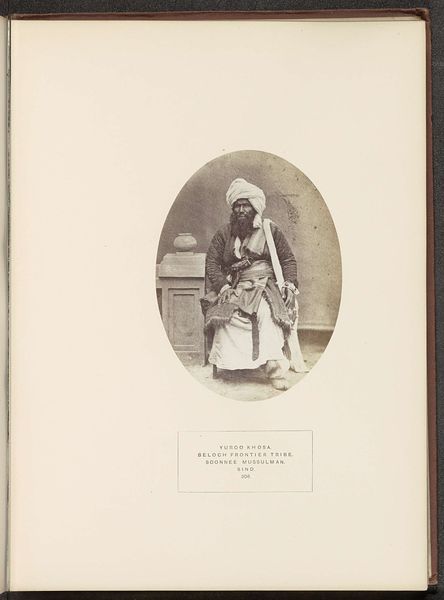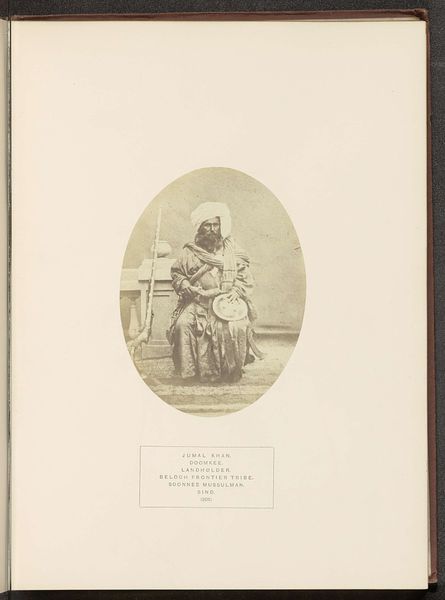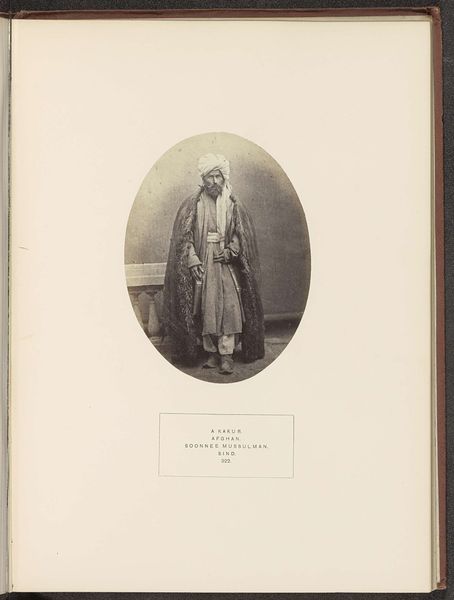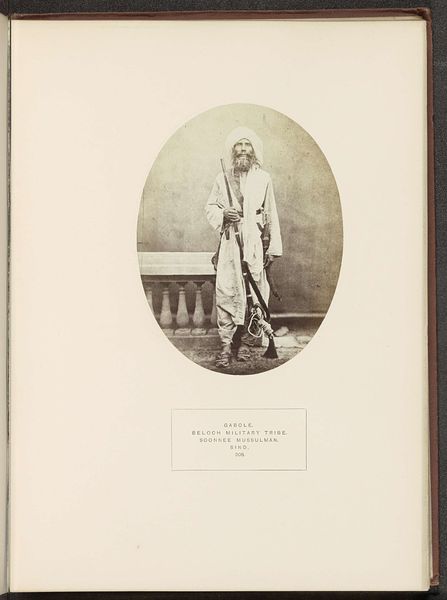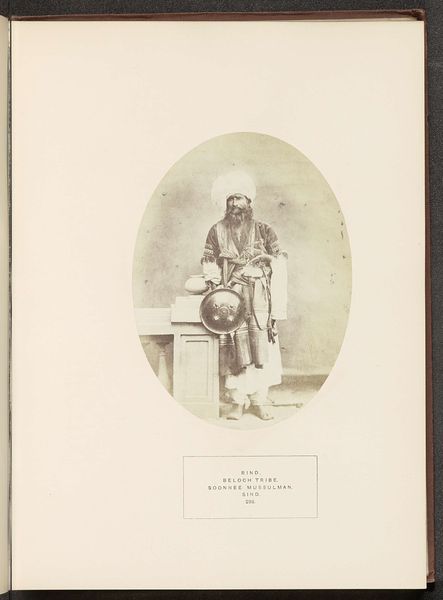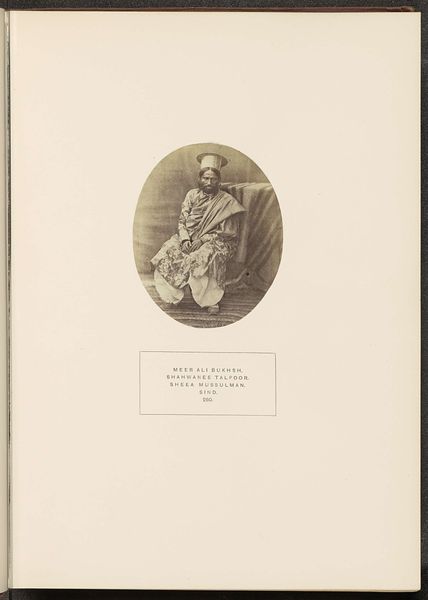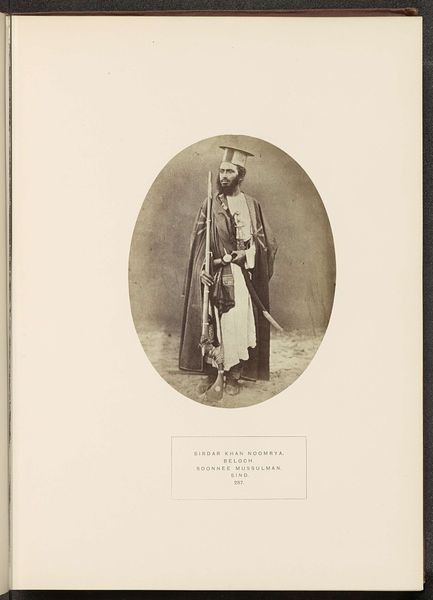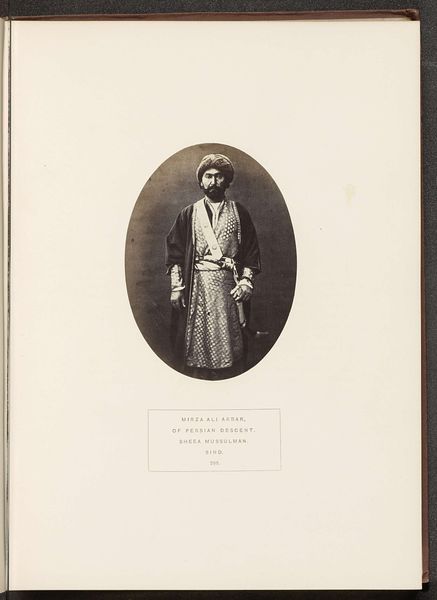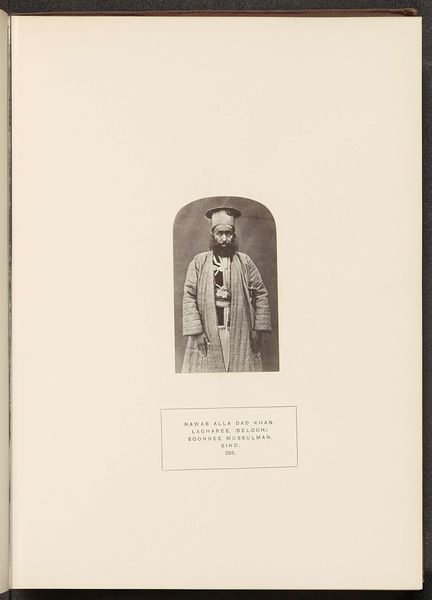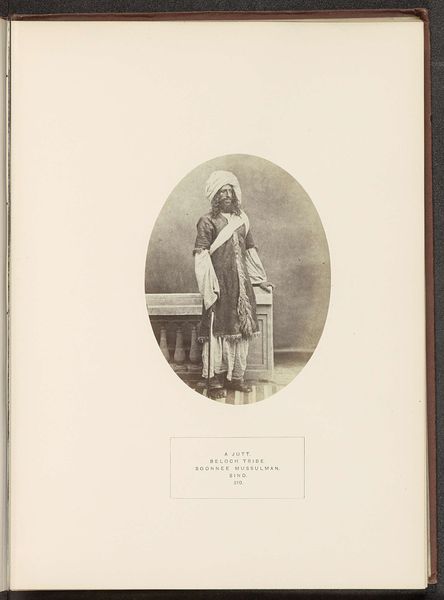
Portret van Itibar Khan, het hoofd van de Kahiri-stam before 1872
0:00
0:00
photography, albumen-print
#
portrait
#
photography
#
albumen-print
Dimensions: height 128 mm, width 103 mm
Copyright: Rijks Museum: Open Domain
Curator: Before us we have an albumen print from before 1872, attributed to Henry Charles Baskerville Tanner. This work is titled "Portret van Itibar Khan, het hoofd van de Kahiri-stam," or "Portrait of Itibar Khan, the head of the Kahiri tribe." Editor: The tonal range is really striking in this portrait; it’s a somber, thoughtful piece. Look at the texture of his turban, and how beautifully the light plays across the folds of the cloth draped over his shoulder. Curator: Indeed, and consider that this photographic portrait captures not just an individual, but a tribal leader. It’sibar Khan embodies a complex history—we see a visible marker of regional power structures and colonial interactions during that era, particularly in British India. His dress, the very way he is staged next to the architectural element, speaks of a careful construction of identity. Editor: Agreed. And look how the oval format emphasizes his figure, drawing your eye directly to his face and posture. There’s something about the formal composition that suggests both dignity and perhaps a subtle air of melancholy, wouldn't you say? Curator: Precisely! His posture and gaze suggest a guardedness. Tanner might have been interested in cataloging ethnic types, but photographs like this, in my view, simultaneously captured the human complexities and individual experiences within larger political dynamics of British Colonialism. It forces a confrontation with the power imbalances inherent in image-making during that period. Editor: It's almost sculptural. There's a strong emphasis on form and shadow, which create an interplay with his garments. This aesthetic decision really elevates it beyond mere documentation. Curator: The artistic quality here complicates its documentary purpose. Images of this nature shaped both Western perceptions of "the East" and influenced the subject's own self-representation in relation to the global political stage. Editor: Thank you for enriching my view. This piece has a delicate beauty that really belies the complexity. Curator: My pleasure. It makes you consider the photographer, subject, and viewer were all participants in shaping the meaning of the image, a century and a half ago.
Comments
No comments
Be the first to comment and join the conversation on the ultimate creative platform.
